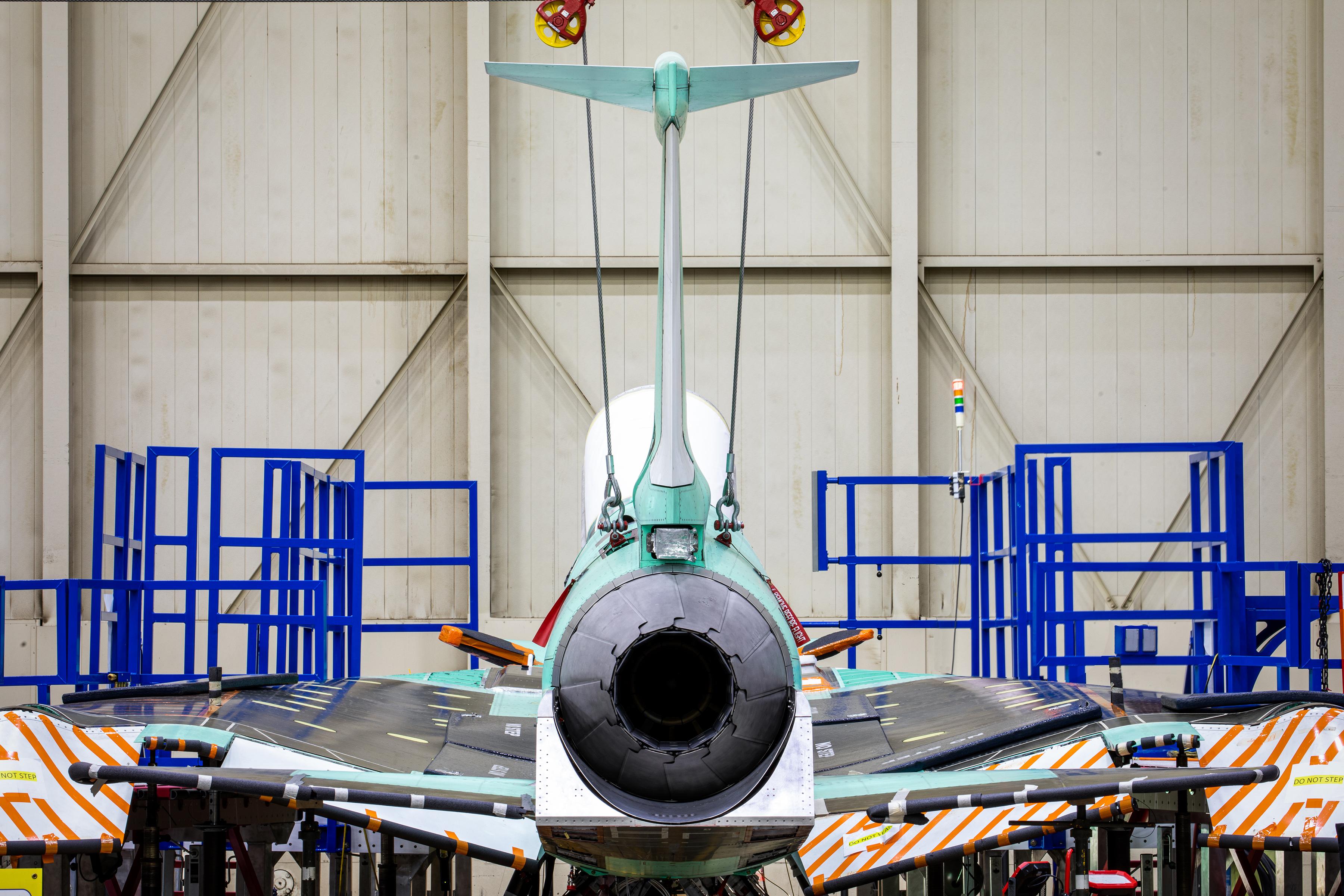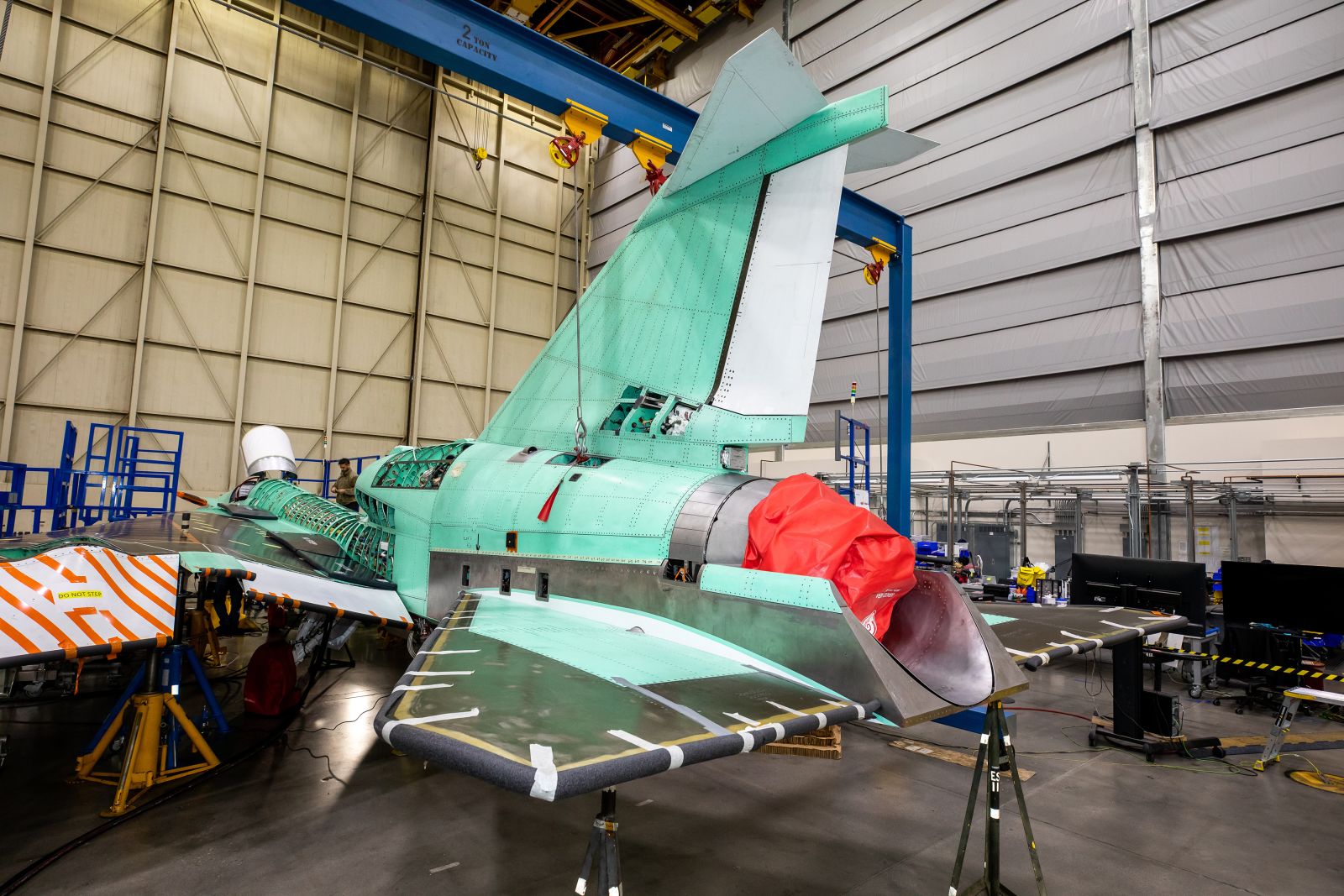


Just after it got the GE Aviation F414-GE-100 Engine, NASA’s X-59 has has been installed with its lower empennage, otherwise known as the tail assembly. Visuals are from the Lockheed Martin Skunk Works in Palmdale, California.
This installation allows the team to continue final wiring and system checkouts on the aircraft as it prepares for integrated ground testing, which will include engine runs and taxi tests.

Preliminary design work started in February 2016, with a plan of X-59 to be delivered to NASA in 2021 for flight testing in 2023. It is expected to cruise at Mach 1.42 (937 mph) at an altitude of 55,000 ft (16,800 m), creating a low 75 Perceived Level decibel (PLdB) thump to evaluate supersonic transport acceptability.
The ground noise is expected to be around 60 dB(A), about 1/1000 as loud as current supersonic aircraft. This is achieved by using a long, narrow airframe and canards to keep the shock waves from coalescing.
On the new development, Lockheed Martin said,
Piece by piece, the X-59 is shaping the future of aviation. Progress continues alongside @NASA on the X-plane with the installation of the lower empennage after successful electrical system tests.
Once complete, the X-59 aircraft is designed to demonstrate the ability to fly supersonic while reducing the loud sonic boom to a quiet sonic thump. This aircraft is the centerpiece of NASA’s Quesst mission.
The Quesst mission has two goals:
Using the gathered data from the test flights , new sound-based rules regarding supersonic flight over land can be written and adopted, which would open the doors to new commercial cargo and passenger markets to provide faster-than-sound air travel.
On the first flight of X-59 NASA Aeronautics said,
We anticipate the X-59's first flight will occur in 2023. After our system check outs, ground tests, and completion of NASA+Lockheed Martin's flight readiness review, we expect to have a more specific date.
Related News....
Text Credit: Kristen Hatfield, NASA
Image Credit: Lockheed Martin
